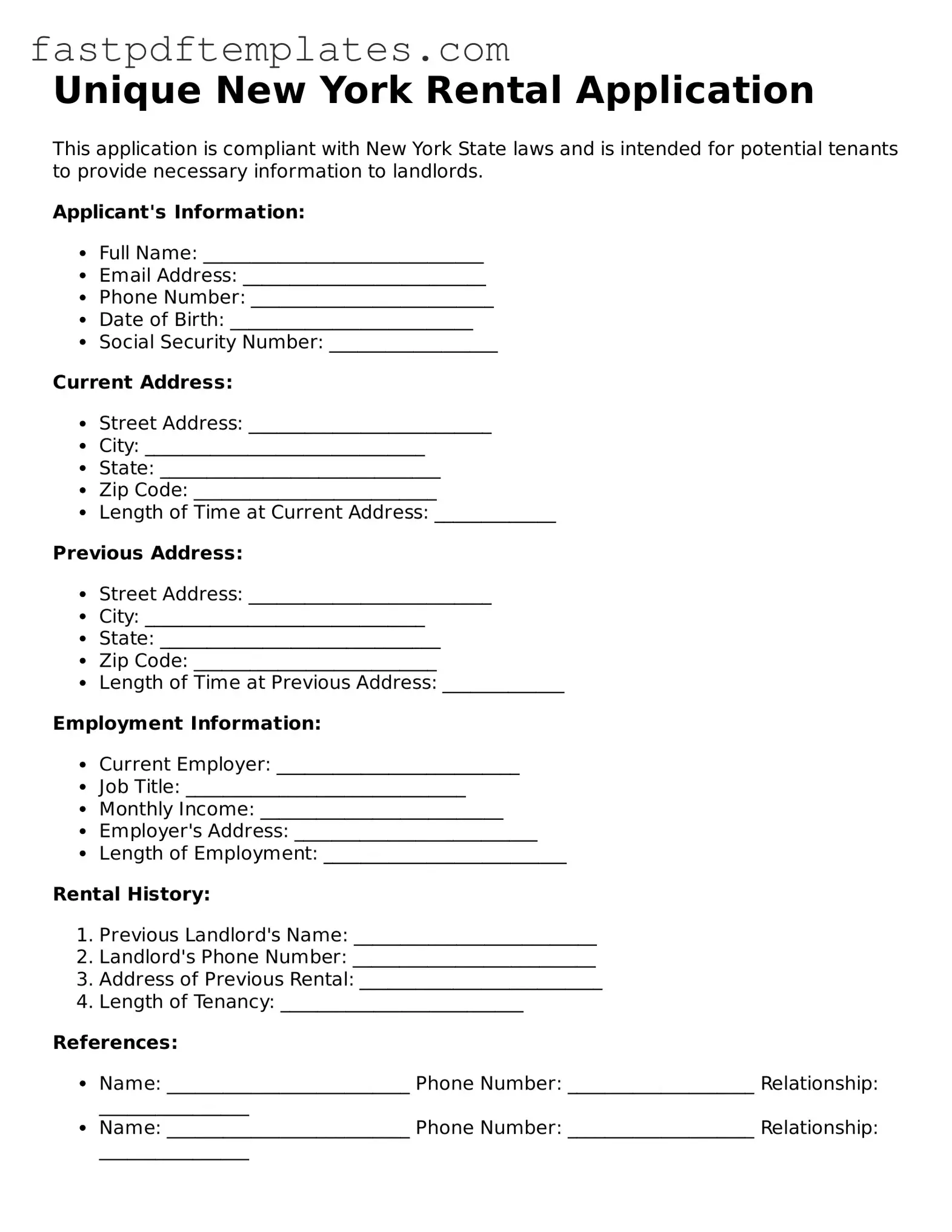The New York Rental Application form is similar to a Tenant Screening Application. Both documents gather essential information about a prospective tenant, such as employment history, income, and rental history. They help landlords assess whether a tenant is a good fit for their property. By collecting this information, landlords can make informed decisions about whom to rent to, ensuring a smoother rental process.
Another document that resembles the New York Rental Application is the Lease Application. Like the rental application, the lease application is used to collect personal details from potential tenants. It often includes questions about credit history and references. This document serves a similar purpose in helping landlords evaluate the suitability of applicants before entering into a lease agreement.
The Rental History Verification form also shares similarities with the New York Rental Application. This form is typically used by landlords to verify the rental history provided by applicants. It requests information from previous landlords regarding payment history and property condition. By confirming the details on the rental application, landlords can gain insights into the applicant's reliability as a tenant.
A Credit Application is another document that aligns closely with the New York Rental Application. This form focuses specifically on an applicant's creditworthiness. It asks for financial information, including credit scores and outstanding debts. Landlords use this information to assess the financial stability of potential tenants, ensuring they can meet rent obligations.
The Employment Verification form is similar in that it seeks to confirm an applicant's employment status and income. This document is often required alongside a rental application. Landlords want to ensure that tenants have a steady income to cover rent. Thus, this verification process is crucial for making informed rental decisions.
The Guarantor Application is also akin to the New York Rental Application. This document is used when a tenant has a guarantor, typically a parent or guardian, who agrees to take on financial responsibility if the tenant fails to pay rent. It gathers similar information about the guarantor’s financial status and credit history, providing additional security for landlords.
A Roommate Agreement can be compared to the New York Rental Application as well. While this document focuses on the relationship between roommates, it often requires similar personal information. Roommates need to agree on responsibilities and financial obligations, making it important to know each other's backgrounds and rental history.
The Move-In Checklist is another related document. While it serves a different purpose, it often accompanies the rental application process. This checklist details the condition of the property upon move-in. It helps both landlords and tenants ensure that everything is in order before the tenant officially takes possession of the rental unit.
The Rental Agreement itself shares some common ground with the New York Rental Application. While the rental application is for gathering information, the rental agreement is the final contract that outlines the terms of the lease. Both documents are essential in the rental process, ensuring that both parties understand their rights and responsibilities.
Finally, the Background Check Authorization form is similar in that it is often used in conjunction with the rental application. This document allows landlords to conduct a background check on potential tenants. It helps landlords verify the information provided in the rental application and assess the applicant's overall suitability for renting the property.
